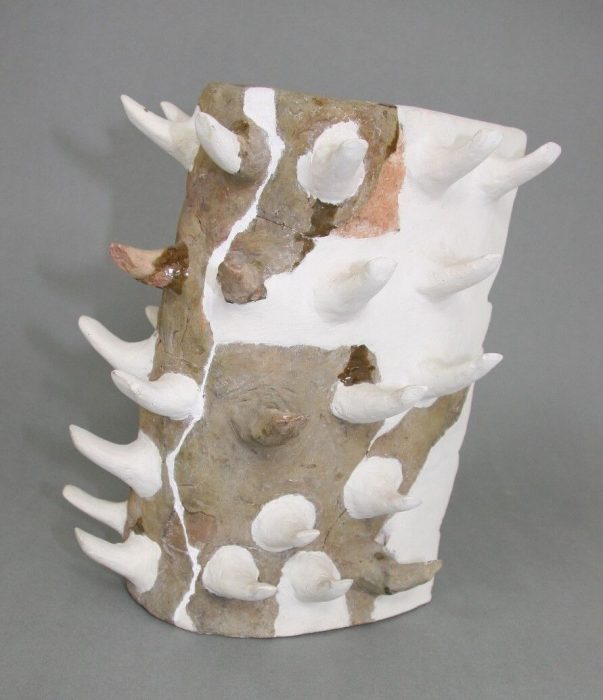
Rack for firing pipes
Ceramic rack with spikes curved upwards formed part of the equipment of a pottery manufacturing workshop. The spikes were used to hang dried clay pipe bowls in order to fire them in the kiln.
Fragments of this unique artefact were discovered during archaeological explorations undertaken by the Warsaw Research Commission in 1953 on the site of the former city moat. Despite the fact that in the second half of the 17th century the municipal fortifications destroyed during the Swedish Deluge (1655–1660, the Swedish invasion of the Polish-Lithuanian Commonwealth) were subject to repairs and renovations, the moat was gradually filled in with rubbish disposed of in the city, and illegal development began to spread on the site. It also became home to pottery workshops, since firing pottery amidst dense urban tissue posed fire hazard. Explorations conducted in the vicinity of the now non-existent Poboczna (Side) Gate, located at the end of Wąski Dunaj Street, revealed well preserved remnants of two kilns: an older one from the end of the 17th century, and a more recent one from the mid-18th century. They were raised on a circular plan using bricks and clay as the binder, and originally covered with a dome.
The artefacts found therein provided a source of information concerning the array of products manufactured by a Warsaw potter. They included fragments of cookware: a variety of pans, decorated and covered with glaze as well as bowls with thick sides. Tiles were manufactured here as well, as was revealed by parts of matrices used for stamping floral patterns on tiles which were found on site. Fragments of carelessly moulded shells of irregular shapes, bristled with spikes attached to them, with sags of multi-colour glazing flowing in-between were most curious. The bowls of over-fired pipes which fell into the grate, including one with a broken spike stuck inside, helped to determine their function – they were used to fire lulka pipes, which followed a Turkish model and consisted of a ceramic bowl to hold tobacco and a stem, most often made of wood. Given the simple form and absence of decoration, the pipes were probably produced for less affluent client base. This group of findings, particularly the fragments of unique racks, provide an insight into the details of the craftsman’s workshop and the diverse array of products manufactured by potters in Warsaw. One of them could be Jan Rosołowicz, of whom we know – through his testament drawn up in 1696 – that he had lived “in the municipal area, by the wall, behind the Poboczna Gate.”
Rack for firing pipes
MID-18TH CENTURY
CERAMIC
EXCAVATED 1953; WARSAW, OLD TOWN,
MOAT BY THE POBOCZNA (SIDE) GATE
MHW/DZA/ZW/1446
25 × 20 × 20 CM
Image licensed under: ![]()
